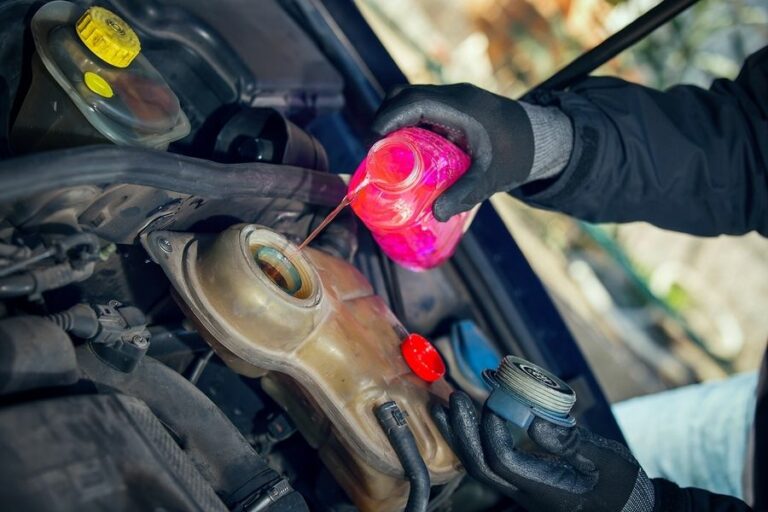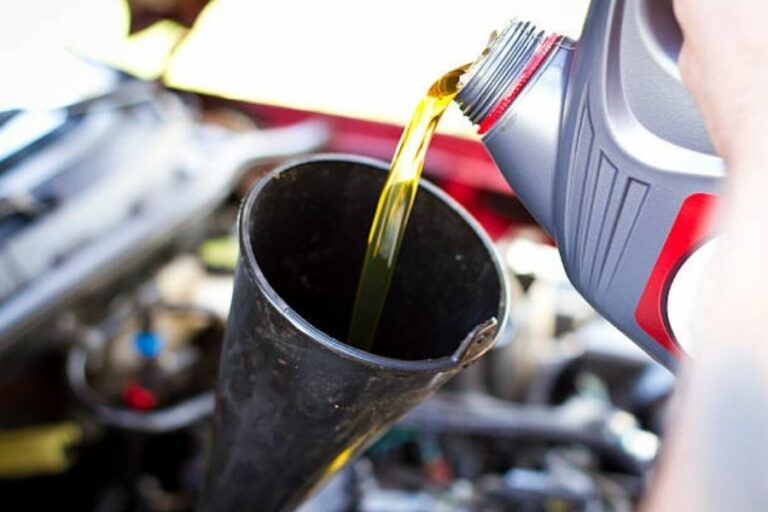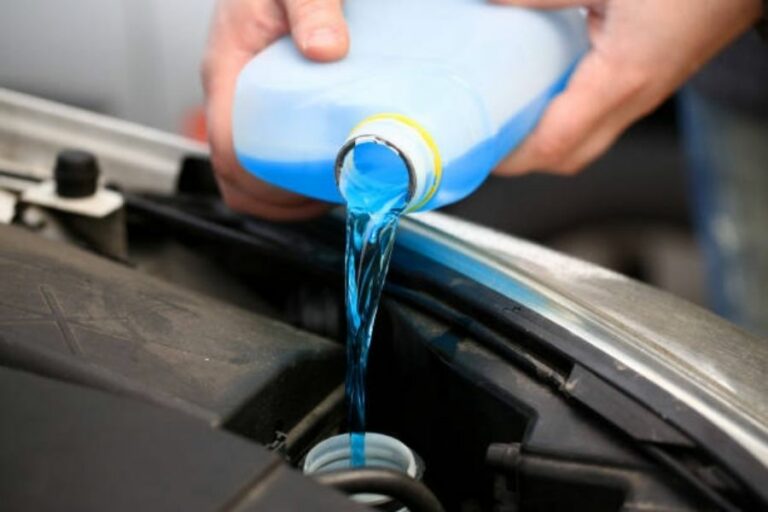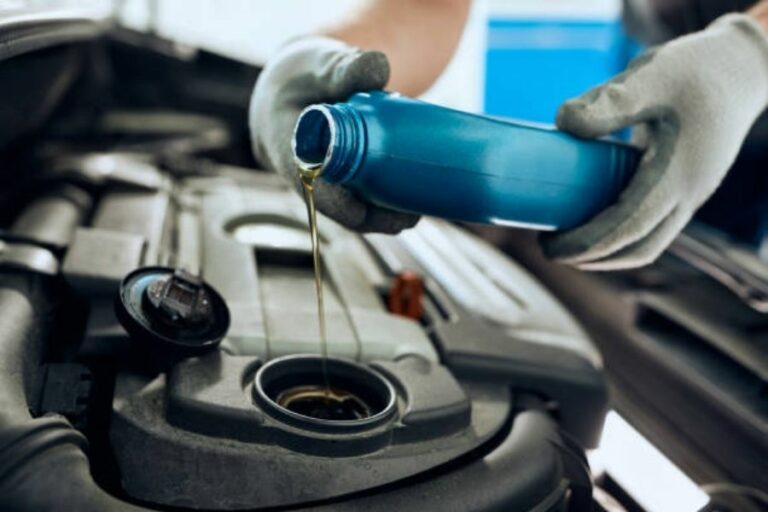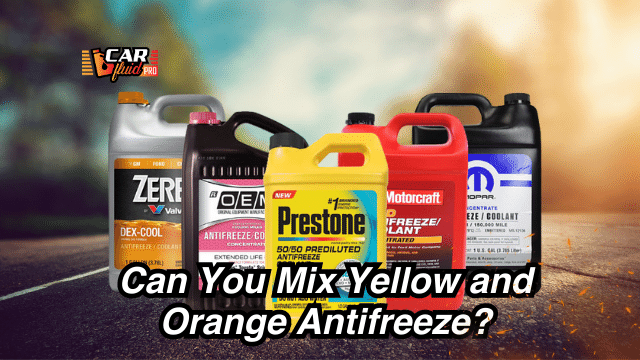Can You Mix Blue and Green Coolant? – Know Before You Use
Every vehicle owner might have faced such a situation when they have a specific coolant in their vehicle and a different colored coolant in hand. In such cases, the first question that pops into mind is whether we should go ahead and mix different coolants. Can you mix blue and green coolant?
You can mix green and blue coolants without hesitation if they are similar. If you mix them, your vehicle engine system’s non-metallic and metallic components will be protected from overheating and freezing.
This guide briefly discusses what ratio to follow, the mixing procedure, the benefits of mixing blue and green coolants, and many more.
Continue reading.
What are the Uses of Blue and Green Coolants?
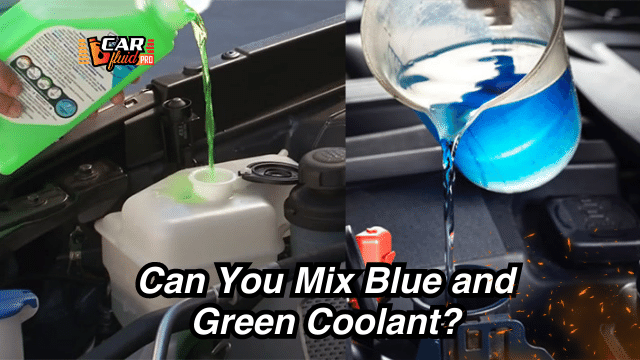
All coolants are formulated differently. Moreover, each vehicle is compatible with a particular type of coolant. So, before refilling the coolant system, read the manufacturer’s manual.
Here is a short introduction to blue and green coolants for your convenience.
Blue Coolant
P-HOAT or Phosphated HOAT coolant comes in blue. This coolant uses phosphates and organic acids to keep the coolant system corrosion-free. It also consists of silicates, keeping the engine cool when running your car. Moreover, blue coolant represents Inorganic Additive Technology (IAT).
Also, blue coolant has a decent lifespan. You will need to change it every 2 years or 60,000 miles or whatever comes first.
Green Coolant
Green antifreeze is one of the earliest types of coolant, also known as conventional. It is made following chemical acid or inorganic technology.
Chemical acid technology’s components degrade faster compared to the blue coolant. Consequently, the lifespan of standard green antifreeze is lower than other coolants. Generally, green coolant offers 3 years of service life before being replenished.
Can You Mix Blue and Green Coolant?
The straightforward answer is YES. But there is a condition; the coolant has to be the same type. For instance, mixing blue antifreeze with your old green will not be an issue at all.
When you mix the blue and green coolants, the liquid antifreeze becomes an ideal option for keeping your car engine cool while driving.
However, carefulness is mandatory.
If you mix the majority % of one type, the mixed coolant will perform differently than expected. Such coolant will weaken your vehicle corrosion inhibitors. Even it can lead you to an unwanted accident if the issue still needs to be solved.
When buying a car, a coolant color is created for the convention. As a result, it becomes effortless for a car owner to choose the best coolant for their vehicle.
In addition, when mixing, it is crucial to ensure they are the same type. Mixing the wrong coolant and using it in the car may turn the antifreeze into gel instead of liquid. Gel antifreeze blocks the coolant system’s passage. At the same time, it will be unable to cool down your car engine.
It is better not to mix any coolant based on color. The reason is the mixed antifreeze may not match your vehicle’s engine. If you are unaware of what color coolant is required for your car, take help from an expert.
Does Mixing Blue and Green Have Any Benefits?
Yes, mixing blue and green coolants gives several benefits. It ensures protection against corrosion and rust, improving the cooling system’s efficiency.
Such coolants offer the below advantages.
It helps Maintain Highest Fuel Economy
A mixture of green and blue coolants can extend your car life. Your car engine runs in the right temperatures, protecting the engine’s life. At the same time, it helps lubricate all coolant system’s components and maintain the highest fuel economy.
Minimizes Downtime and Maintenance Cost
Different lab tests, bench tests, and fleet tests are done to ensure that such coolant protects the car’s important components. Metal parts, water pumps, radiators, wet sleeves, etc., are the components that show minimal downtime with the mixture of green and blue coolant.
Provides Protection to Engine
When blue and green coolants are mixed, the number of concentrated blends increases, making them premium-quality antifreeze. Due to these concentrated blends, this coolant provides 240,000 miles to 600,000 miles of engine protection from rust scale, corrosion, premature failure, extreme protection, and many more.
Prevents Vehicle Breakdown
40% of car breakdowns on the road occur because of the problem related to the vehicle coolant system. But if an incorrect coolant is used, this coolant option can protect the car, extending the lifespan of your vehicle engine.
How to Mix Blue and Green Coolant?
When mixing the blue and green coolants, the most important thing is to ensure the perfect ratio.
Remember, the ratio should be 50% blue and 50% green coolant. Then, this mixture needs to be blended with 50% water.
So, before pouring the coolant into your vehicle, the mixture should be 50% blue-green coolant and 50% water.
Why should I mix water with the coolant? Let me be clear.
When only blue and green coolant is mixed and poured into the coolant system, the mixture will become thick and gum up the system. Moreover, the coolant lifespan will reduce, causing the engine to overheat. That is why 50% water needs to be mixed with the blue-green coolant blend.
Here is a step-by-step process on how to mix blue and green coolants.
Step 01: Read your vehicle manual thoroughly. The manual will describe the usage specifications of antifreeze/coolant.
If the information is unavailable, contact your vehicle manufacturer. Learning the spec is significantly essential before proceeding.
Step 02: It is always best to buy coolant from reputed brands. ThermalTake and Prestone are top brands for manufacturing quality coolants.
Step 03: First, prepare a mixture of the blue and green coolant. Follow one-to-one or 50:50 ratios. Then blend this mixture again in a new bottle with 50% water and 50% blue-green coolant. This blend will effectively protect your car engine from overheating. Additionally, a 50:50 blue-green coolant and water mixture fight engine corrosion, boiling, and rust.
Important Note:
- If you live in harsh winter weather, the ratio should be 35% blue, 35% green, and 30% water.
- If you live in a hotter area, the balance should be 30% blue, 30% green, and 40% water.
Step 04: If you are preparing the mixture in a bottle, shake it for at least 1 minute before pouring it. On the other hand, if the mixture is prepared in a bowl, grab a clean stick and stir the mixture. Thus, the whole blend will be even, which is significantly necessary.
Step 05: Ensure your car engine and coolant system are completely cool. Otherwise, leave the vehicle for 10 – 15 minutes. Once cooled, refill the coolant system with the mixture. Then, turn your car engine on and hit the road.
Important Note:
- Remember to maintain the correct level. Too much or too low needs to be prohibited.
Caution While Mixing Blue and Green Coolant
Following a few cautions will make the blue and green coolant mixture procedure safe. Read below to learn the cautions.
- Maintaining the right ratio is the most important caution. The ratio should be 50:50. Incorrect ratio will lead your car to early damage.
- Avoid mixing two of the wrong coolant. The outcome of doing that will be horrible. The coolant must be the same type.
- Start working when the coolant system and engine are completely cool.
- If you mix incompatible coolants, the mixture could clog small passageways inside the coolant system, such as the radiator heater core.
- Don’t overfill the coolant system.
- Buy coolant based on your engine type. For example, if your car is equipped with an aluminum engine, choose a coolant that is safe for aluminum engines.
- Locate your coolant reservoir before proceeding to work. This will help you complete the refilling process easily.
- If you have flushed the old coolant, the coolant system should be free of air before refilling.
- Pour the coolant mixture slowly and carefully.
What Coolant can you Mix with Blue?
When mixing another type of coolant, the most important thing is to ensure they are the same type. This is no exception for blue coolant as well.
Blue coolant is P-HOAT type using Inorganic Additive technology. Choose the same coolant type for mixing with blue coolant. P-HOAT type coolants are either blue or green-colored. So, you can combine the blue coolant with green-colored coolant.
What Coolant can you Mix with Green?
Green coolant is also formulated using Inorganic Additive Technology. It can be mixed with the same type of coolant, such as blue. Green-colored coolant is a traditional coolant that is used in most classic vehicles.
Last Words
Since all coolants available in the market are labeled as “universal,” many people are unaware of whether you can mix blue and green coolant.
The reality is, yes, they can be mixed if they are compatible. Happily, blue and green coolant uses Inorganic Additive technology. For this reason, combining them will not damage your car engine.
However, maintaining the correct ratio of 50:50 is crucial while mixing them.
While there are a few risks involved when mixing two different colored coolants, as long as the compatibility and correct ratio is ensured, there will be no problem. In case of any doubts, you better consult a professional mechanic.


